What’s New in Web Experiences, Ignite 2020: Need to secure your remote workers? Choose Microsoft Edge as your browser for business
The message is loud and clear, and we’ve heard it: Providing secure remote access to resources, apps and data is the No. 1 challenge reported by security leaders. Cloud connected apps and services define our ability to work remotely, and with 60% of the time on PCs spent in the browser1, it’s one of the primary apps we use to get things done. To protect their organizations and data, IT professionals need a browser that’s up to the challenge because, let’s be honest, they have enough on their plate provisioning devices to their scattered workforce and making sure that workforce can remotely access everything they need. A browser should strengthen and simplify their security posture, even as contexts grow increasingly complex. The new Microsoft Edge works seamlessly and easily across your Microsoft 365 security ecosystem, and with the highest-rated protection against phishing and malware as reported in an independent study by NSS Labs, it’s more secure than Chrome for businesses on Windows 10.
In Microsoft’s recent cybersecurity survey, 90% of organizations indicated that phishing attacks had directly impacted them since the start of the pandemic. That stat is stunning—no wonder it’s their top concern! So, what did the independent study by NSS labs show about phishing protection in Microsoft Edge? We’re proud to report that Microsoft Edge blocked 95.5% of phishing attacks while Chrome only blocked 86.9%. When it comes to preventing a network breach and the potential to lose valuable data or IP, every bit of protection matters.
Microsoft Edge on Windows 10 also has a second line of defense: hardware isolation through Microsoft Defender Application Guard. Hardware isolation assumes something will get by—it’s the moat to stop the attack from accessing the device or corporate network. And Microsoft Edge natively supports this solution on Windows 10.
Blocking external threats though, is only half of the equation for IT professionals. While data can be stolen if there are cracks in the armor, IT pros also sweat the idea of data accidentally falling outside of their control. End users working online from home is just that scenario. Talk to just about any IT pro and you’ll hear about their new-found sprint towards Zero Trust security: using identity and the security “health” of devices or apps—in combination with “least privilege” access to data for users—to control and manage their sensitive data. Microsoft 365’s intelligent security solutions enable this journey for our customers, and Microsoft Edge natively supports these solutions to work seamlessly within this architecture.
This year for Ignite, I’m excited to share what our team has been working on to give organizations the confidence they need to adapt to this constantly evolving security landscape. Protected end users are productive end users. With Microsoft Edge, organizations get a browser that offers a helping hand to help make you and your organization safer and more successful.
Preventing data loss on your endpoints
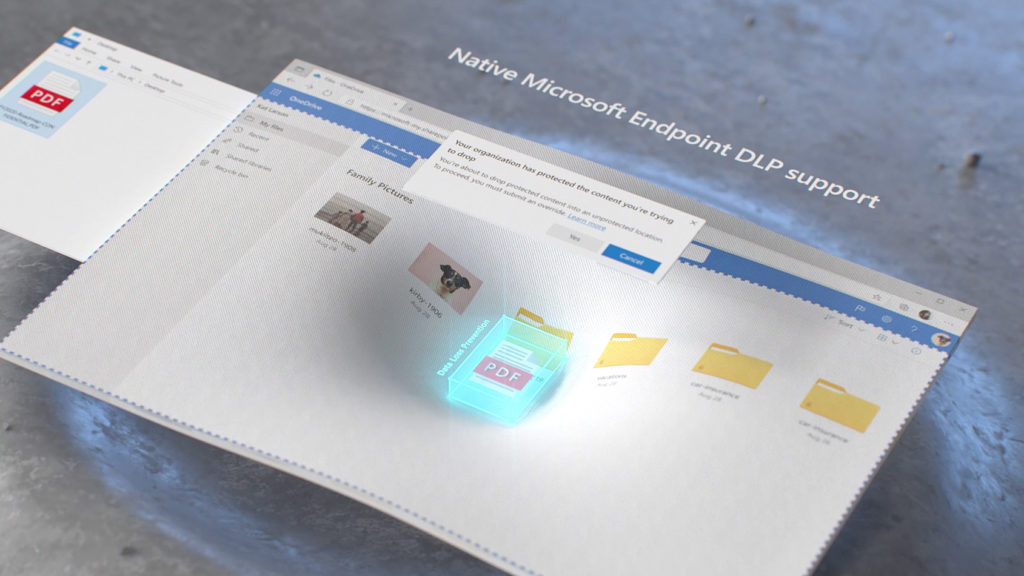
One approach to keeping data under corporate control is through data loss prevention (DLP) software. Remote work has blended contexts at home and made this even more important. As end users bounce between work and personal states, accidents can happen, and sensitive data might land in an unsecure location. Generally available in October, Microsoft 365’s latest solution, Microsoft Endpoint Data Loss Prevention (DLP), functions to help protect against this scenario—and it’s natively supported in Microsoft Edge on day one of its release. It alerts end users to non-compliant activity (like accidentally moving a sensitive file into an unprotected location) to help prevent data loss when they’re working from the browser. Better guardrails for end users and better compliance tools for organizations. It’s a win-win.
Consolidating on one browser that IT professionals can easily manage
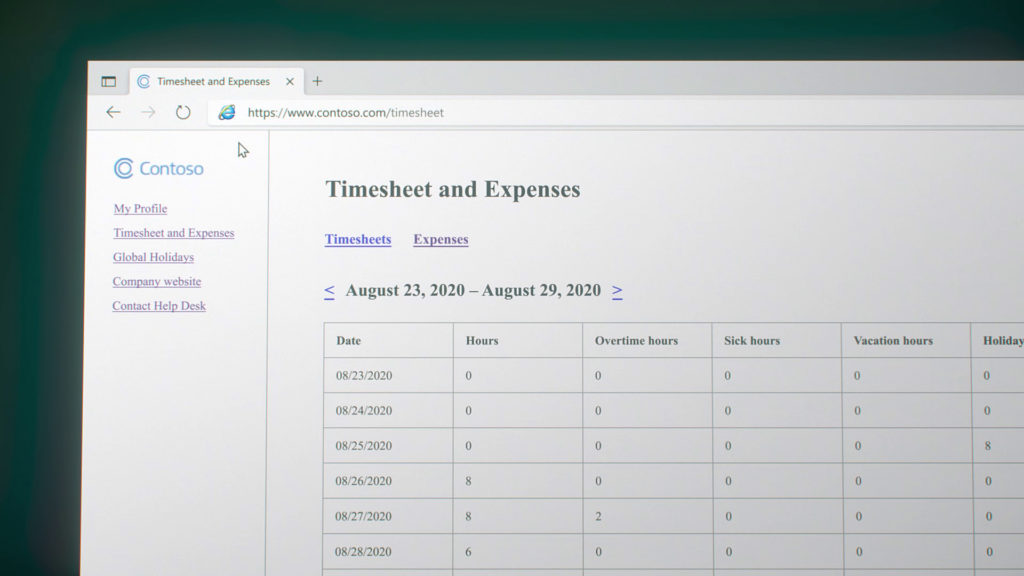
For end users juggling apps during remote work, being able to easily access what they need is a boon. For IT pros, peace of mind comes with having end users working in a browser protected by the latest security technologies. Microsoft Edge addresses both with Internet Explorer mode. IE mode simplifies the user experience by allowing them to access business-critical legacy sites without leaving Microsoft Edge—Internet Explorer stays closed, and they juggle one less app. And since end users stay in Microsoft Edge, IT pros know they’re working from our latest browser with our latest security capabilities. Internet Explorer mode is a great tool and soon will be even easier to manage for IT pros. Coming soon, IT pros will be able to manage their Enterprise Mode Site list from the cloud. Instead of locally hosting the XML site list, they’ll be able to easily access and manage it anywhere, whether at home or back at the office.
But more than just improving the user experience, Microsoft Edge with IE mode provides flexibility to organizations to modernize their internal web apps and sites at their own pace, even as the online landscape continues its shift to more modern web standards and away from Internet Explorer. The Microsoft Teams online app will no longer support Internet Explorer 11 by the end of November 2020 and the remaining Microsoft 365 apps and services will no longer support Internet Explorer 11 by August 2021. Additionally, support for Microsoft Edge Legacy will end in March 2021. For help with the transition to Microsoft Edge, eligible Microsoft 365 customers can receive deployment guidance at no additional cost through FastTrack and call on the App Assure promise for compatibility, if needed.
Manage only Microsoft Edge instead of the entire device
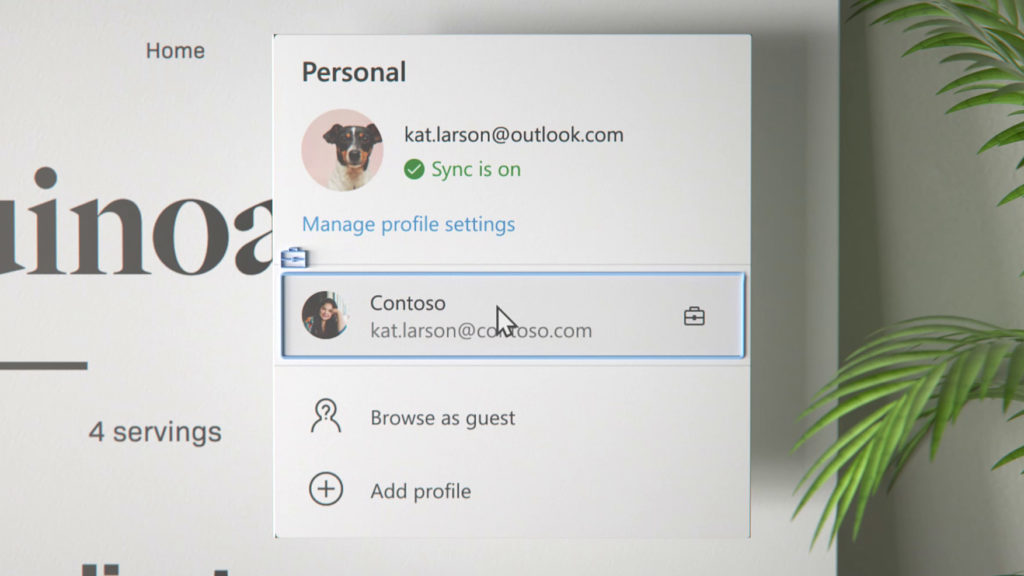
Managing an entire device whenever it’s used to access corporate data isn’t ideal for end users and frankly, we’ve heard that IT departments would prefer not to as well! Mobile application management (MAM) as part of a unified endpoint management solution is both the future and the ideal state—IT pros can manage only the activity in an app that is related to work and then can leave the rest of the device alone. App Configuration in Intune will soon allow IT pros to do that using Azure Active Directory profiles in Microsoft Edge. If on a personal device, end users can login with their work identity and the organization will only manage that experience. IT departments get the control they want for compliance, and end users can work from the device that best suits them—even if it’s their personal device—without handing over the keys.
Lastly, we know that sometimes rolling out new versions of apps can unexpectedly break things, even after robust testing and experimentation. In the remote work environment, any break is magnified. It’s hard to account for everything, so in those rare cases, Microsoft Edge offers a lifeline: roll back. Available today, IT professionals can easily roll back to a previous version of the new Microsoft Edge to minimize interruption and address the issue, if needed.
Bringing the work experience home for end users
Not only has a decentralized workforce demanded new approaches to security and management, but it has also asked us to rethink how we do our work. The in-person, second-nature habits we developed in the office don’t necessarily translate to digital workflows. Microsoft Edge helps to bridge this gap with Microsoft Search.
Microsoft Search is one of my favorite tools since I began working remotely. We all use search for finding information across the consumer web but using search at work has changed the way I find information and answers throughout my workday. When I can’t remember where that document I was supposed to review is, I can just search for it, right from my Microsoft Edge address bar2. Just like on the consumer web, I get a list of dedicated internal results with what I need right at the top. Search in the workplace is an unbelievable time saver for you and your employees.
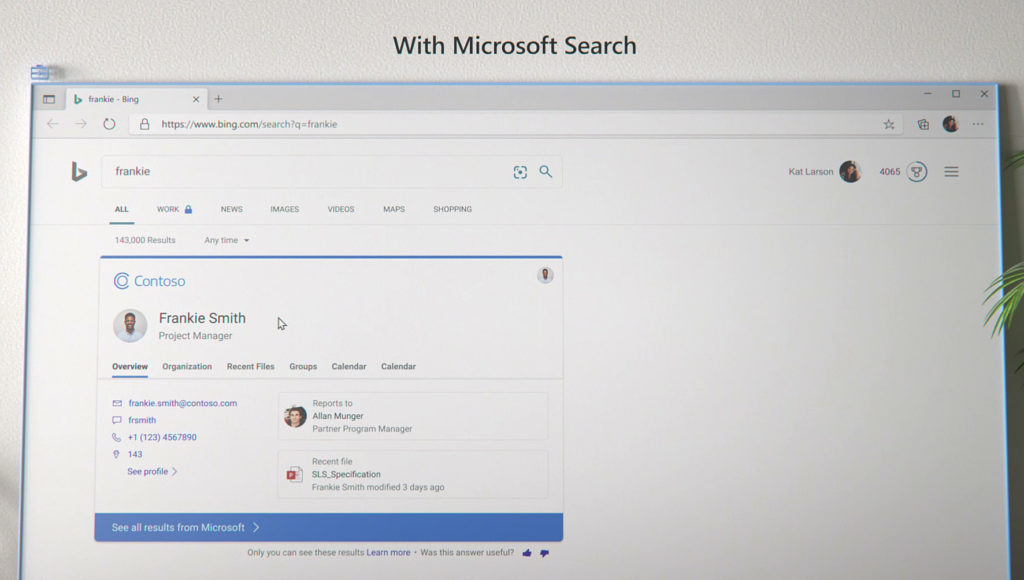
This year the theme for Microsoft Search is more coverage and more convenience. To ensure that each time an employee searches they’ll be covering more of the information within their company, we’ve added support for more connectors; now there are more than 100 available across our ecosystem of partners. Additionally, we’ve added Power BI to the types of files you can find, available in the WORK tab on Bing.
To make all of that information more accessible, we’re adding search to more places employees are already working. Coming soon, employees will be able to find files they’re working on and people they’re working with right from the Windows Search Box. Another new integration point for Microsoft Search is in Sidebar Search. I love being able to highlight a coworker’s name or an acronym while I’m browsing in Microsoft Edge and then simply right click to search and get results personalized to my company in the sidebar.
Things get easier for IT pros as well. With Mined Bookmarks and Acronyms they’ll get automatic suggestions in the Microsoft 365 Admin center for improving the employee experience, and an improved analytics dashboard provides quicker insights into what employees need help finding most.
Microsoft Edge also offers a homepage great for remote work—Microsoft Edge can connect to Microsoft 365 accounts so that end users get a dashboard with their files, sites and Microsoft Search each time they open a new tab. Today, we’re announcing new functionality for this page to help end users stay informed with news from their company and industry. Coming soon, the enterprise new tab page will be customizable with company and industry news to give end users more relevant information as they work. This homepage is one of my favorite features in Microsoft Edge. My working files, company news and Microsoft Search are all in one place. It’s the easiest way to start the workday.
Lastly, opening PDFs in the browser is almost standard at this point, and today we’re announcing new capabilities to make this experience even more robust in Microsoft Edge. Digital signatures play a huge role in verifying the authenticity of digital documents, particularly for anything legally or financially binding. Coming soon is the ability to view and validate PDF digital signatures in Microsoft Edge which helps to ensure that the file is legitimate and hasn’t been tampered with. Combined with new features like highlighting and versioning, Microsoft Edge continues to build out PDF functionality to best support today’s enterprises.
Linux. Yes, it’s finally here (and other dev tools too)!
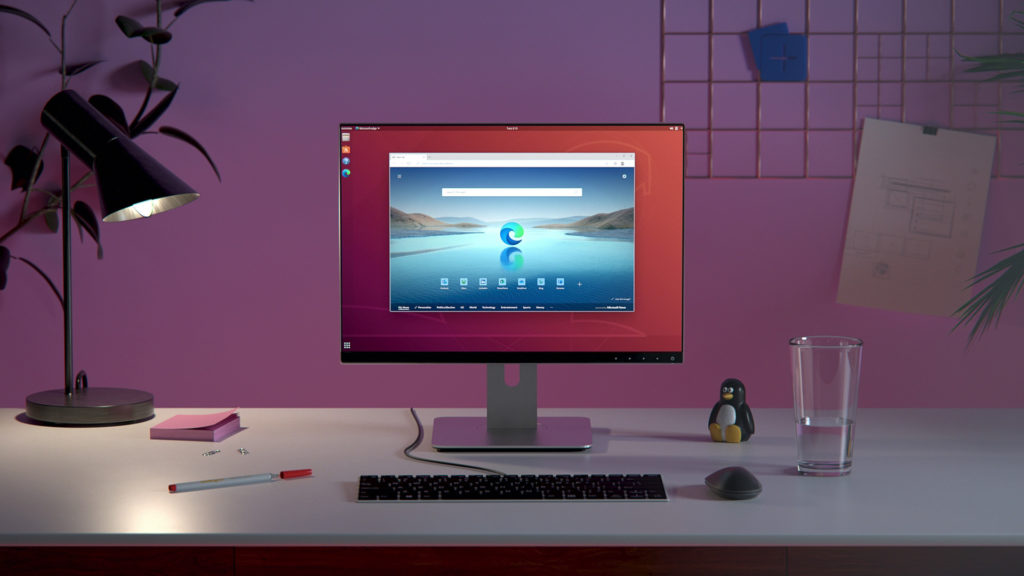
Our mission to bring Microsoft Edge to the platforms our customers use daily takes its next step: starting in October, Microsoft Edge on Linux will be available to download on the Dev preview channel. When it’s available, Linux users can go to the Microsoft Edge Insiders site to download the preview channel, or they can download it from the native Linux package manager. And just like other platforms, we always appreciate feedback—it’s the best way to serve our customers.
In addition to bringing the Microsoft Edge Dev channel to Linux, we’re also expanding the developer toolkit with both WebView2 and the Visual Studio Code 1.0 extension moving out of preview to general availability in the coming months. WebView2 is decoupled from specific versions of Windows to offer full web functionality across Windows apps, and the Visual Studio Code 1.0 extension (found in the VS Studio extension store) enables seamless workflows for devs as they switch between contexts.
Microsoft Edge continues to grow alongside organizations
The feedback we get from IT professionals and end users is instrumental in our mission to make Microsoft Edge the best browser for business. We’re listening, and the unique insights and real-world scenarios that we hear from customers continue to shape our roadmap. Take kiosk mode for example.
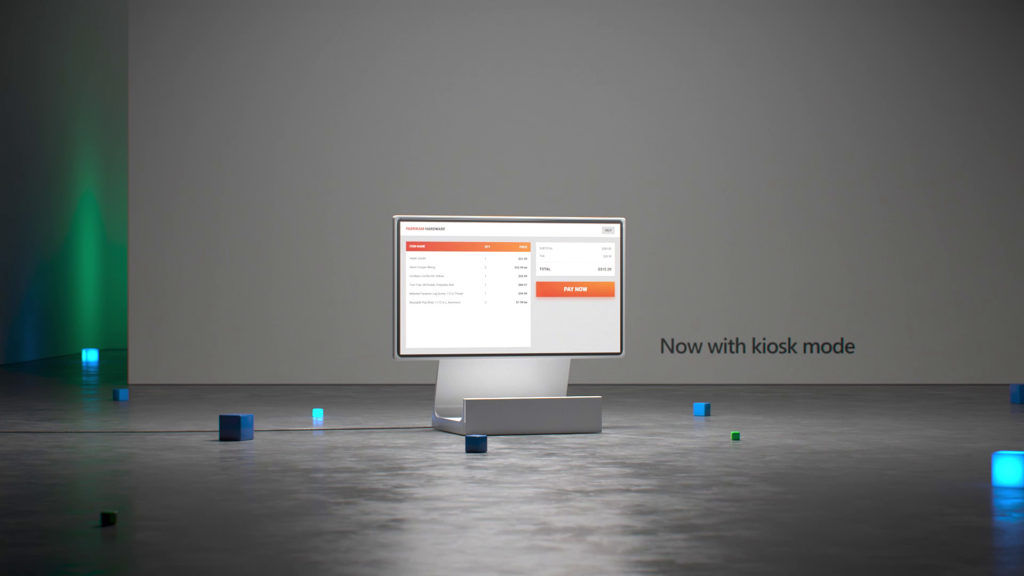
This was a loved capability in Microsoft Edge Legacy and, coming soon, organizations will be able to run a preview of kiosk mode in the new Microsoft Edge. Together with assigned access, it creates a locked down and tailored browsing experience on Windows 10 for kiosks and digital signage.
We’ve also heard that IT pros want more content to learn about Microsoft Edge (and who wouldn’t!). So, just like Ignite, our team is going digital to bring the sessions online that otherwise would have happened in person. IT pros can check out all of the videos on the Ignite 2020 playlist and stay in loop by subscribing to our newly refreshed YouTube channel, or they can watch the State of the Browser session for an overview of how we’re approaching remote work with Microsoft Edge. And as always, there is the Microsoft Edge docs site for even more information.
As we look beyond Ignite, security and simplicity are our north stars. We want organizations to be able to protect their users and data with confidence, with simple yet powerful management tools that work together across their ecosystems. I wish everyone a great Ignite and hope IT pros find Microsoft Edge to be the perfect fit for them, their end users, and this time of remote work. Stay safe, both in your real and digital lives.
1 Internal telemetry
2 Bing required as the default search engine

